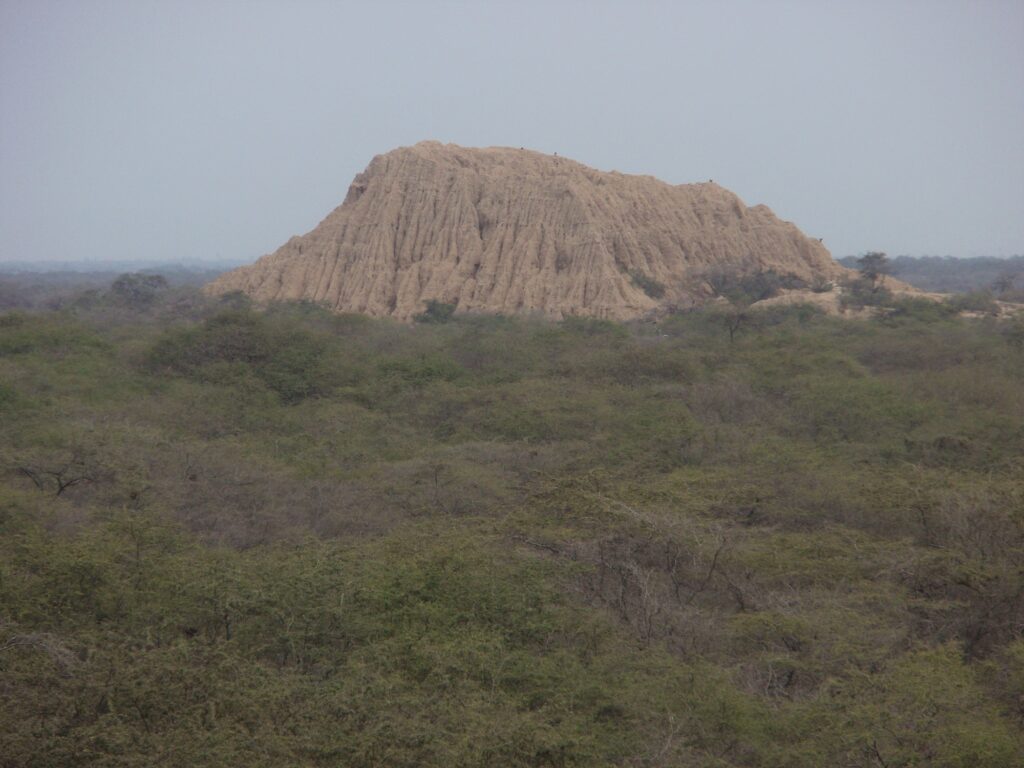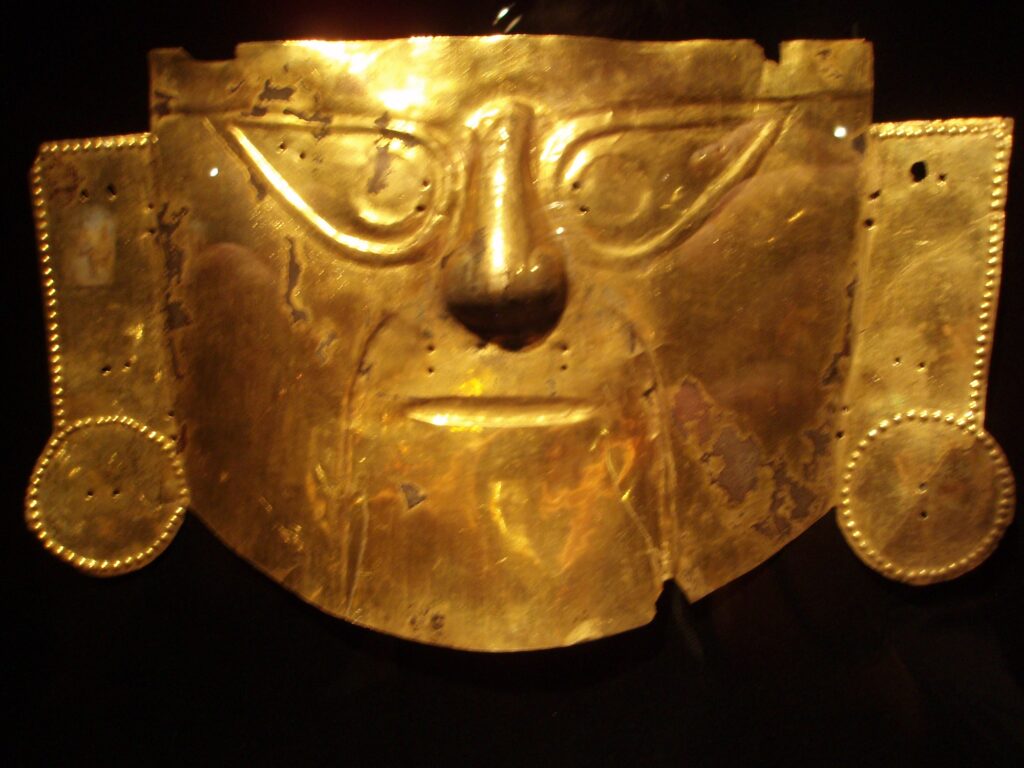Die meisten Schätze Perus stammen aus der Zeit der Moche (etwa 100 n.Chr. bis 700 n.Chr.) und der Sicán (etwa 700 n.Chr. bis 1.000 n.Chr.). Herausragend sind die Grabbeigaben des «Señor de Sipán», des «Viejo Señor de Sipán» und des «Sacerdote de Sipán» (Moche-Kultur; ausgestellt im Museum Tumbas Reales in Lambayeque) und des «Señor de Sicán» (Sicán-Kultur; ausgestellt im Museum Sicán in Ferreñafe). Auch lohnt sich ein Besuch der Grabanlagen bei Sipán und im Bosque de Pomác sowie eine Fahrt ins Tal der Pyramiden bei Túcume.
Most of Peru’s treasures are from the Moche (approx. 100 AD. until 700 AD) and the Sicán (approx. 700 AD until 1.000 AD). The grave goods of the «Señor de Sipán», of the «Viejo Señor de Sipán» and of the «Sacerdote de Sipán» (Moche Culture; exhibited in the Museum Tumbas Reales in Lambayeque) and of the «Señor de Sicán» (Sicán Culture; exhibited in the Museum Sicán in Ferreñafe) are outstanding. A visit of the burial sites in Sipán and in the Bosque de Pomác as well as of the Valley Of The Pyramids near Túcume are worth it.



